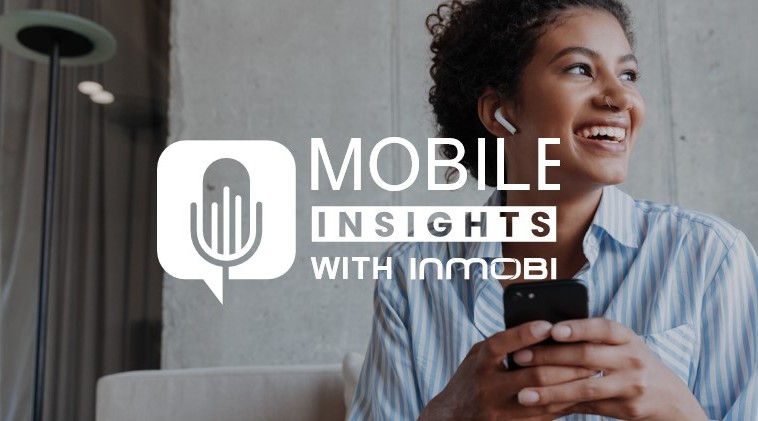Welcome to another edition of Mobile Insights with InMobi! This is our new Q&A series, where we sit down with leading mobile marketing and in-app advertising experts to get their take on the current state of the world.
Note: Want to listen to previous editions of Mobile Insights with InMobi? Head to our SoundCloud page for more.
For this interview, I sat down with Tejaswi Gautam, GM of Device Solutions at InMobi, to chat about the current state of affairs for telcos and wireless carriers in the U.S. In this 22-minute conversation, we talked about how telcos are handling increasing bandwidth, the current state of 5G, the value of value-added services and what telcos need to do now to succeed in the future. Tune in now to hear the whole conversation!
LISTEN IN
Top Quotes from Teja
-
“I think a lot of essential services that all of us have started using, for which we were too reliant on offline channels previously, and all of these put together are driving that surge in data consumption. And that's what is also making telcos think out of the box as to how to sustain some of these high consumption trends with tweaks to their network infrastructure.”
- “I think some of these trends are not just temporary spikes but are here to stay in the long run.”
- “I must say I'm very impressed by the work that telcos have done. And I'm sure it's not something that they've done recently, but it's been over the last decade or so. I mean, we haven't seen a lot of dropped calls, you've seen our Zoom calls work fine, and even with, you know, like the entire family being in a home, we haven't seen a lot of clogging in the network. Generally I think we've seen a lot of stability on the network, which I think is the biggest contribution that telcos could have done in the current situation, where communication, connectedness information is so, so critical for each one of us, where we just have to stay at home.”
- “I think it's a mixed bag. What we are seeing is in Asia, they're mostly on track from a 5G perspective. We just saw T-Mobile launch their 5G in New York and I know China is forging ahead with their 5G plans. Broadly those plans are in line with the projections. I think from a Europe perspective, obviously the plans are getting delayed, so I think you'll see a slight lag in how the Europe comes online on 5G.”
- "I think when you talk about 5G, you have to talk at two levels. The current 5G, being slightly technical here, is mostly on a low band spectrum, which means that you will likely not see tremendously better speeds compared to 4G, but what you will see is better coverage. So with both T-Mo and Verizon, I think they're up to about a hundred million plus 5G subscribers here in the U.S. but you won't really notice if you're on a 5G compared to 4G. But then again, once these things scale over a period of the next five years, that's where you will really start to see the impact of 5G kick in and actually see the benefit trickle down to some of the services that you consume on a day to day basis. We'll see how things go for now. From what I know, about 20% of the devices being sold here in the U.S. as of two weeks back are actually 5G devices. So you are seeing consumer shift towards buying 5G capability devices, but then you also need the networks to be capable of providing the benefit there.”
- “Some of the developments that you're seeing happening in the world right now, it will only expedite the transition to 5G because people are realizing more and more the value of having a scalable, fast, efficient cellular network, because everything will likely move digital and it will move at a faster pace going forward. So I think it's all the more critical for a lot of these guys to spend billions of dollars today so that they are better prepared to deal with similar situation in the future.”
- “What a lot of these telcos are trying to do now is consolidate the content into their platform. You do have these large independent content platforms out here, like a Netflix, who have become giants in and of themselves. Right. But at the same time, the means for delivering this content obviously goes through the device and that's where the telco comes in.
There are different strategies. You would see someone like a T-Mobile now becoming more of an aggregator where in the music space they work with Spotify, Pandora all those guys, but then they have their own platform to surface that content. Then on the other hand, you have AT&T, who actually owns a lot of these content production houses.”
- “I think a lot of these buzzwords will become reality. You had internet of things, AI, 5G, and I think what is happening right now is people are rethinking and reimagining a lot of these ideas and seeing what it really takes to bring these to the market in the next six months.”
LISTEN IN
More Episodes Of Mobile Insights With InMobi
Interested in listening to more interviews just like this one? Click the links below to tune in.
About the Author/Interviewer
Matthew Kaplan has over a decade of digital marketing experience, working to support the content goals of the world’s biggest B2B and B2C brands. He is a passionate app user and evangelist, working to support diverse marketing campaigns across devices.


